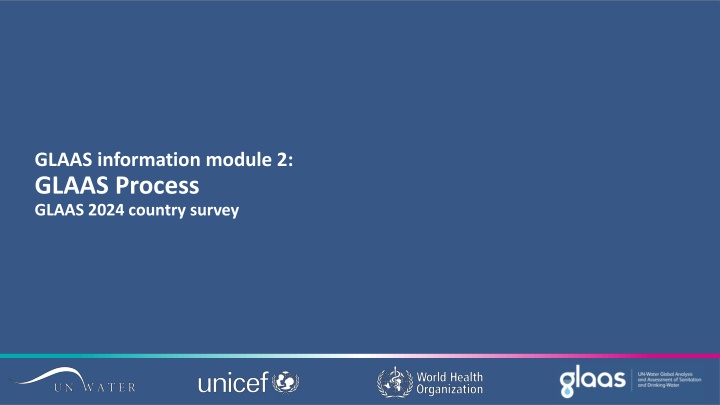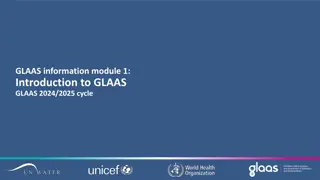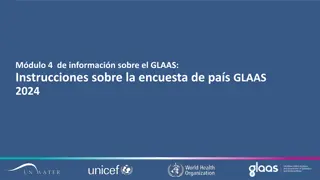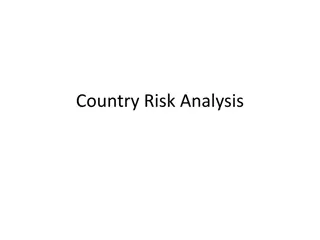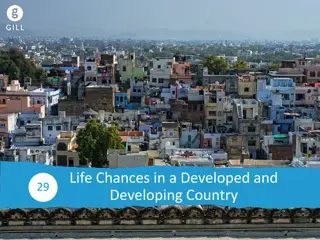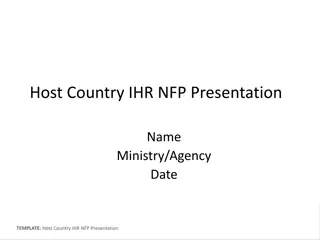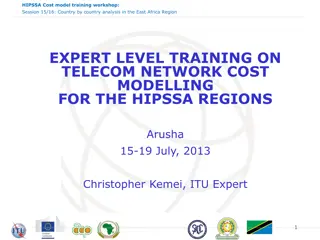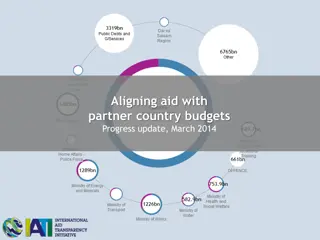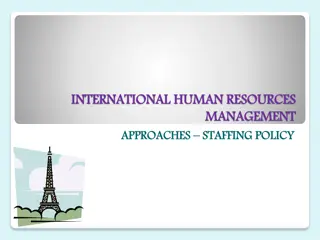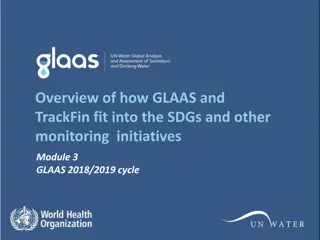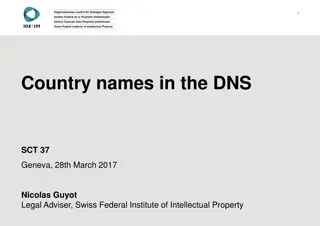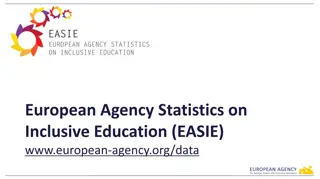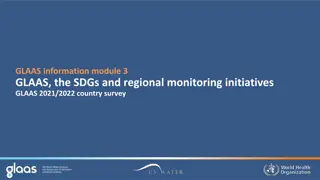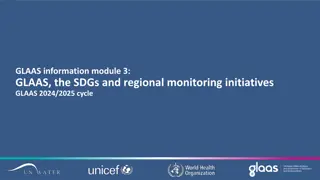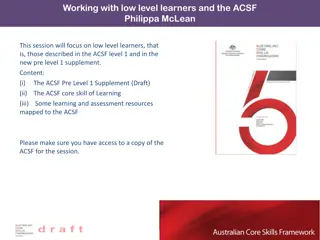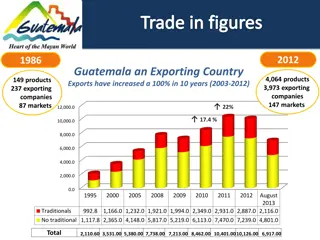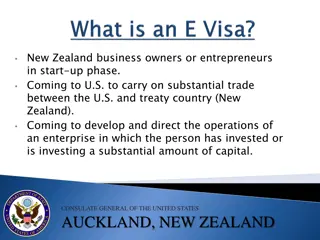Overview of GLAAS Process at Country Level
This module provides an overview of the proposed process for implementing GLAAS at the country level. It includes information on documents required for the survey, deadlines, and steps from deciding to participate to data collection, validation, submission, and data management for the GLAAS 2024 survey. It emphasizes the importance of identifying key stakeholders and having a national focal person to coordinate GLAAS activities within the government.
Download Presentation

Please find below an Image/Link to download the presentation.
The content on the website is provided AS IS for your information and personal use only. It may not be sold, licensed, or shared on other websites without obtaining consent from the author.If you encounter any issues during the download, it is possible that the publisher has removed the file from their server.
You are allowed to download the files provided on this website for personal or commercial use, subject to the condition that they are used lawfully. All files are the property of their respective owners.
The content on the website is provided AS IS for your information and personal use only. It may not be sold, licensed, or shared on other websites without obtaining consent from the author.
E N D
Presentation Transcript
GLAAS information module 2: GLAAS Process GLAAS 2024 country survey
Overview This module gives an overview of the proposed process for implementing GLAAS at country level. This module provides a list of documents to submit alongside the survey form. The deadlines for submitting the GLAAS 2024 country survey is 15 October 2024.
Introducing GLAAS 1 Deciding to participate 2 Pre-data collection 3 Suggested GLAAS process Data collection 4 Validation & Submission 5 Data 6 management GLAAS 2025 report & data 7
Introducing GLAAS 1 Introducing GLAAS Exchanges among WHO and UNICEF country and regional offices and partners, with government representatives and key stakeholders to assess interest in participating in the GLAAS process Deciding to participate 2 Pre-data collection 3 Data collection 4 Validation & Submission 5 Data 6 management GLAAS 2025 report & data 7
Deciding to participate Introducing GLAAS 1 Decision by government to participation in GLAAS Identify a national focal person from the government Preferably from within a lead ministry or department to be the main coordinator of GLAAS Identify resource needs and outline a brief work plan Deciding to participate 2 Pre-data collection 3 Data collection 4 Validation & Submission 5 Data 6 management GLAAS 2025 report & data 7
Pre-data collection phase Introducing GLAAS 1 Choose if you d like to complete the GLAAS 2024 survey using the fillable PDF or online through eGLAAS (online data collection option). For more information about the fillable PDF and eGLAAS see the guidance document and Module 4. Note that the participatory process for completing the GLAAS survey with meetings/workshops is the same for both the fillable PDF and eGLAAS. Countries that decide to use eGLAAS should contact the WHO regional office and HQ as soon as possible to set up access. Deciding to participate 2 Pre-data collection 3 Data collection 4 Validation & Submission 5 Data 6 management GLAAS 2025 report & data 7
Pre-data collection phase Introducing GLAAS 1 Identify key stakeholders including: Deciding to participate 2 WASH line ministries National Statistics Office Ministry of Finance Ministry of Health Ministry of Education Drinking-water and wastewater regulators Ministry of Water Resources or equivalent Lead ministry responsible for climate resilience In-country development partners (e.g. donors, NGOs, etc.) Private sector Other focal points of national, regional, or global monitoring initiatives, such as the SDG 6 focal point and the National Statistics Office SDG reporting focal point Pre-data collection 3 Data collection 4 Validation & Submission 5 Data 6 management GLAAS 2025 report & data 7
Pre-data collection phase Introducing GLAAS 1 Gather copies of any relevant sector documents, policies, and plans and identify other data sources. Deciding to participate 2 Pre-data collection 3 Data collection 4 To prepare for GLAAS data collection, organize an inception meeting or workshop to present GLAAS and discuss data collection with government and key stakeholders. Validation & Submission 5 Data 6 management GLAAS 2025 report & data 7
Data collection phase Introducing GLAAS 1 National focal point coordinates responses to GLAAS survey from various stakeholders Deciding to participate 2 Pre-data collection 3 Ongoing meetings and discussions among stakeholders to complete individual sections of survey Data collection 4 Validation & Submission 5 Data 6 management GLAAS 2025 report & data 7
Validation of results Introducing GLAAS 1 As a number of stakeholders have likely been involved in completing the GLAAS survey, it is important to have a final government validation meeting with everyone involved in GLAAS to ensure that everyone agrees with the information in the survey. Deciding to participate 2 Pre-data collection 3 Data collection 4 Validation & Submission 5 The government reviews the data and signs off on the results before submission. Data 6 management GLAAS 2025 report & data 7
Submission of GLAAS country survey documents Introducing GLAAS 1 National focal point submits the following documents: 1. Survey form 2. Country feedback form 3. Consent form (if applicable) The submission deadline for the GLAAS 2024 survey documents is 15 October 2024. Submit the completed PDF survey package by email to the WHO regional office and to glaas@who.int; or Submit the completed eGLAASsurvey package by clicking Submit survey on the online platform. Deciding to participate 2 Pre-data collection 3 Data collection 4 Validation & Submission 5 Data 6 management GLAAS 2025 report & data 7
Data management and quality assurance Introducing GLAAS 1 After the GLAAS survey is submitted, WHO will review the surveys and follow up with the GLAAS focal point with any additional questions. GLAAS country highlights will be generated through the GLAAS data portal for country review as part of the quality assurance process. Deciding to participate 2 Pre-data collection 3 Data collection 4 Validation & Submission 5 Data 6 management GLAAS 2025 report & data 7
GLAAS 2025 report, data and data portal Introducing GLAAS 1 The GLAAS 2025 report is expected in Q3 2025 and will be publicly available online on the GLAAS website and the GLAAS data portal (https://glaas.who.int/). Deciding to participate 2 Pre-data collection 3 All data from the GLAAS 2024/2025 cycle will be published on the GLAAS data portal. On the data portal, users can generate customized country highlights as well as other data analyses and download GLAAS datasets. Data collection 4 Validation & Submission 5 Data 6 management GLAAS 2025 report & data 7
Making the most of the GLAAS process Introducing GLAAS 1 Throughout the GLAAS process, consider how discussions and data generated can contribute to improving WASH in your country. In past GLAAS cycles, countries have used data to: Enhance sector coordination Formulate policies, plans, regulations, programmes Strengthen national monitoring and review systems Advocate for WASH funding Contribute to international and regional reporting See the document Using data collected through GLAAS: Making the most of the GLAAS process for more examples of how countries have used the GLAAS process and data. Deciding to participate 2 Pre-data collection 3 Data collection 4 Validation & Submission 5 Data 6 management GLAAS 2025 report & data 7
GLAAS 2024/2025 cycle timeline Country highlights on the GLAAS data portal Country survey available April 2024 GLAAS 2025 report and data available on the GLAAS data portal Final deadline for GLAAS country survey: 15 October 2024 2024 2025 Apr Jun Aug Oct Dec Data management including quality assurance Regional GLAAS trainings Use of GLAAS data in country processes & SDG reporting
Thank you! For additional information please contact glaas@who.int glaas@who.int
